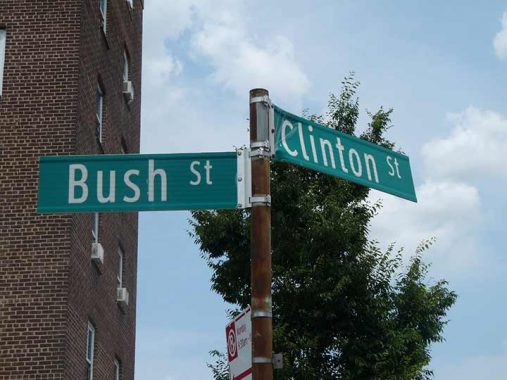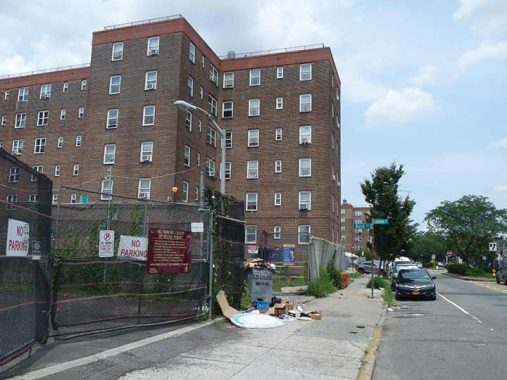
A foray into what was formerly called “South Brooklyn” when it was actually the southern end of the City of Brooklyn before it absorbed the rest of Kings County and was subsequently swallowed by Greater New York took me past the Red Hook Houses. While other formerly rough and tough parts of Brooklyn such as Park Slope, Prospect Heights, Williamsburg and Greenpoint have been considerably tamed by rezoning and gentrification, Red Hook, while rents and property values have risen, has resisted the gentrification push that so many other parts of Brooklyn have undergone.
In the humble opinion of “your webmaster,” this has happened in large amount because of Red Hook’s isolation from the subway network; the nearest station is Smith-9th Street (F,G.) However, I also think the presence of the Red Hook Houses, a sprawling public housing complex whose borders are roughly Lorraine Street, Richards Street, West 9th and Clinton Streets, have served as a check, sealing off the southern end of Red Hook from the relatively ritzy Carroll Gardens. The Brooklyn-Queens Expressway along Hamilton Avenue also plays an not inconsiderable role.
The Red Hook Houses are one of the older public housing complexes in Brooklyn. Roughly 6000 people live in a total of 30 buildings of between two and six stories high. Designed by Alfred Easton Poor, the Houses opened in 1939 and were considered innovative at the time with modern kitchens, bathrooms, and laundry facilities. Unfortunately crime raised its ugly head in the subsequent decades, and in 1992, a year considered the nadir of crime all over NYC, public school principal Patrick Daly was killed in a hail of crossfire between rival gangs. I have meandered through and past the Red Hook Houses repeatedly without incident over the years, though not since crime ramped up again beginning in 2020.

In one of the coincidences that crop up now and then, the 1992 presidential election is namechecked on the Red Hook Houses’ eastern end. This intersection has been in existence, though, since the early 1800s. There is also a Perot Place in the Bronx, as independent Ross Perot got a healthy 19% of all votes that year.
As always, “comment…as you see fit.” I earn a small payment when you click on any ad on the site.
8/2/23
